PUBLISH COMMERCIAL NON-FICTION
Publishers are continually needing to consider: “What to publish?” This course focusses on publishing commercial non-fiction.
Some will establish a limited repertoire of publication activities, focusing on:
- academic books
- novels e.g. romance, science fiction, horror
- text and educational books
- informative or self-help books
- material on specific topics such as health and wellbeing, ostrich farming etc., fashion or gardening magazines, music scores etc.
Other publishers will engage in a wider range of activities, publishing books, journals, monographs and newspapers in their different branches. The nature of the publishing enterprise will determine what kinds of texts they will publish, and how they choose which texts to publish.
Whilst it can be taken alone, this course is ideally studied as a follow on from Publishing I and Publishing II.
Save
Lesson Structure
There are 7 lessons in this course:
-
What to publish in commercial non-fiction
-
The difference between non-fiction and commercial non-fiction
-
Using strong voice and narrative
-
Types of non-fiction
-
Non-fiction genres
-
Using reader interest and expectations to help decide what to publish
-
Identifying a perceived need
-
Using cost and profit-making potential to make decisions
-
Planning a New Publication : Developing a Non-Fiction Book Proposal
-
Why self-publishers need a book proposal
-
Considering the publisher/business perspective
-
What the author wants vs. what the reader wants
-
Questions to ask and answer in the book proposal
-
Starting the publication process
-
Editing and proofreading
-
Typesetting
-
Standard book sizes
-
Financial Management and Costing a Publication
-
Overview of potential outside services required for self-publishing
-
Print vs eBook
-
Market analysis for publishing in print
-
Competitor analysis
-
Estimating initial print run
-
Creation costs
-
Production costs
-
Marketing costs
-
Distribution costs
-
How royalties work
-
Managing Resources and Expectations
-
Comparing resources for print vs eBooks
-
Print on demand
-
Just-in-time printing
-
Overview of print expenses
-
Resources required for eBook publishing
-
Analysing the market
-
Developing a business plan
-
Business plan framework
-
Risk Management
-
Financial Risks
-
Scalability and Risk Management
-
Production
-
Copyright
-
Legal risks
-
Protecting intellectual property, including DRM and IRM
-
Managing Writers and Illustrators in the Freelance Market
-
Types of freelancers and their services
-
Working with publishers, writers, and illustrators
-
Why authors choose to write
-
Specialist professionals and consultants
-
Managing Production, Distribution, and Author Promotion
-
Sales agencies, PR, and conferences
-
Establishing an author platform
-
Networking
-
Social media
-
Media releases
-
Timing of production and distribution
-
Quality control
-
Marketing approaches, including total market approach, market segmentation, and developing the marketing mix
Aims
-
Discuss the important considerations that affect the decision of what to publish.
-
Describe the process of planning the publication of a non-fiction book.
-
Discuss the financial requirements to produce a new publication.
-
Develop procedures for managing staff, freelancers and other resources in a self-publishing business.
-
Demonstrate insight into the different types of potential risks in a publishing business, including legal and financial risks.
-
Develop an improved capacity to work effectively with colleagues in the publishing industry.
-
Develop procedures for the management of production, and distribution of a publication.
What You Will Do
-
Research the kinds and styles of works produced by three different book publishers;
-
List market research strategies that a publisher might use to decide which proposal to develop;
-
Research the percentage of publication given to advertising and graphics in three e-zines or books;
-
List the information that a publisher might want to research before either (i) commissioning a new children’s book (choose the topic), or (ii) starting up a new magazine aimed at 8-12 year old children
-
Investigate the costs involved in cash and/or in resources in producing a particular publication
-
Write up a budget for the publishing of one issue of a local newsletter in two colours
-
Identify factors that contribute the very different retail prices of books and magazines
-
Prepare a draft business plan for a publishing business of your choice.
-
Investigate insurance policies that would be relevant to the publishing industry
-
Define publishers’ responsibility in regards to copyright
-
Explain how a publisher would find a freelance writer and the process for contracting them
-
Briefly explain the importance of a photo library.
-
Track the process of a best seller and collect information on the marketing/advertising/selling process
-
Write different procedures which would be relevant to management of the production and distribution of a new e-zine, new magazine or new industry newsletter.
TAKE THE NEXT STEP AND ENROL NOW!
Learn more about the publishing process for non-fiction writing. Non-fiction writing is a massive market within the writing industry.
Knowing about non-fiction writing and publishing can be a good way to improve your job and career prospects in the publishing industry.
You can enrol on the course now, but if you have any questions about the content of the course or studying with ACS, then please get in touch with us today - use our FREE COURSE COUNSELLING SERVICE to get in touch with our expert tutors. They will be pleased to help you!
